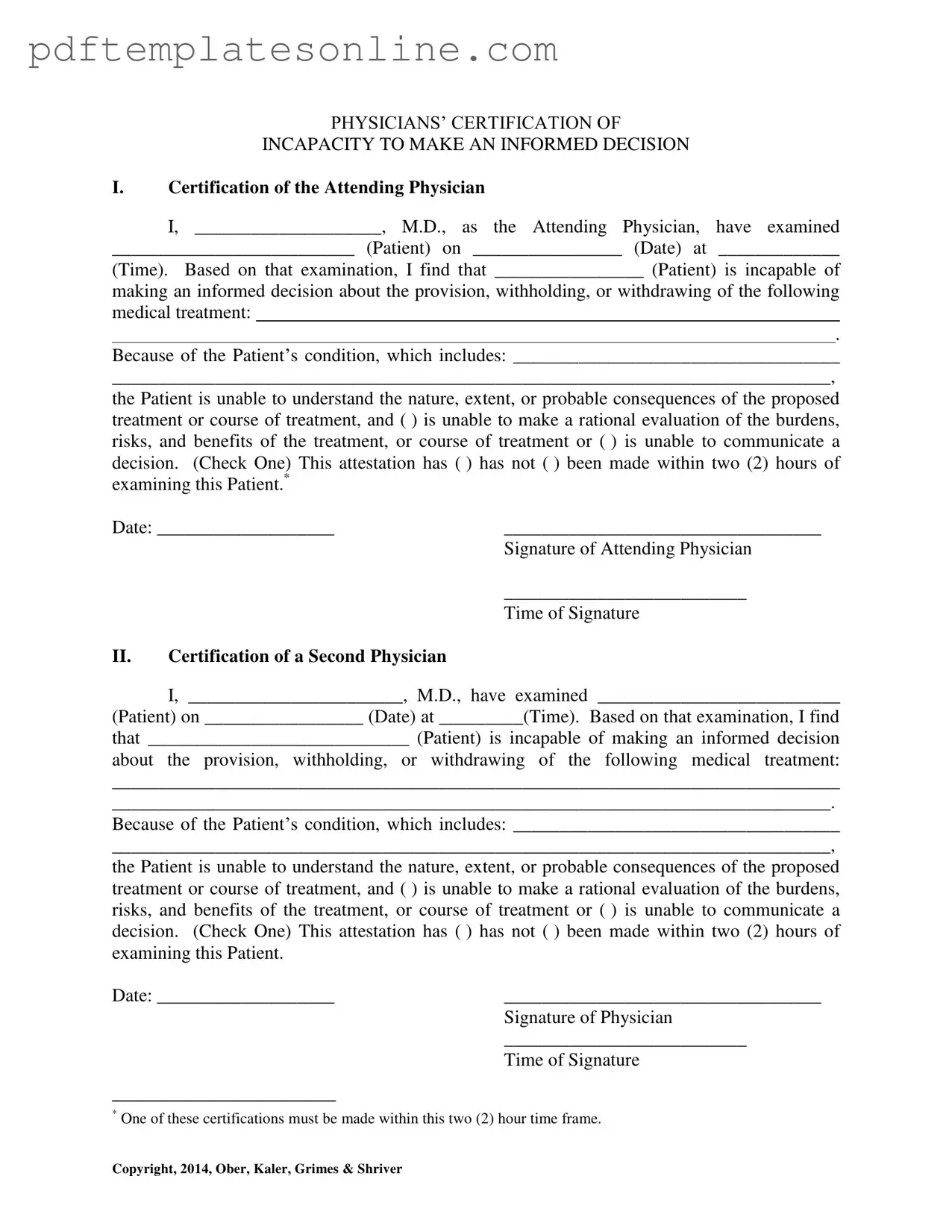Blank Certification Of Incapacity Form
The Certification of Incapacity form is a crucial document used by physicians to determine a patient's ability to make informed medical decisions. It serves as a formal declaration that a patient is unable to understand or evaluate the implications of proposed treatments due to their medical condition. This form requires the signatures of at least two physicians, ensuring a thorough assessment of the patient's capacity.
Access Certification Of Incapacity Editor Now
